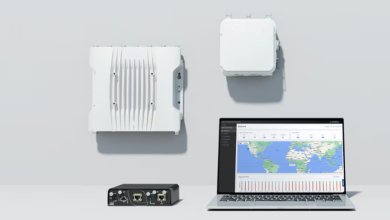How Java Card Ensures Data Security in Cryptographic Applications

Java Card enables the secure execution of cryptographic applications on smart cards by isolating sensitive operations in a dedicated virtual machine (VM). It prevents data leaks between multiple apps while keeping keys confined to the secure element. The technology combines hardware protections (secure memory, tamper resistance, crypto coprocessors) with strict runtime access controls for robust security.
Robust Cryptographic Algorithms and Key Management
Java Card platforms support a wide range of cryptographic algorithms, including AES, RSA, ECC, and SHA families. These standards enable developers to implement strong encryption, digital signatures, and secure hashing within applications. Java Card securely generates, stores, and manages cryptographic keys inside the secure element. This process protects keys from extraction or unauthorized use.
Effective key lifecycle management is vital for maintaining security. Java Cards enforces strict policies on key generation, usage, and destruction. It also supports secure key injection during manufacturing or personalization. By combining hardware and software protections, Java Card ensures that cryptographic keys remain safe throughout their lifetime. This robust framework underpins trusted applications, including payment, identity, and access control systems.
Secure Communication Channels and Authentication
Java Card facilitates secure communication between the card and external readers or devices. It employs encryption and mutual authentication protocols to prevent eavesdropping and impersonation. Secure messaging ensures that commands and responses are encrypted and integrity-checked before transmission. This prevents attackers from injecting malicious instructions or intercepting sensitive data.
Mutual authentication mechanisms verify both the card and the reader, establishing trust on both ends. Java Card supports protocols such as GlobalPlatform SCP (Secure Channel Protocol) to safeguard communications during personalization and runtime. By securing the data exchange channels, Java Card mitigates man-in-the-middle attacks and unauthorized access attempts. This ensures that only legitimate parties interact with cryptographic applications.
Protecting Against Physical and Logical Attacks
Java Card devices face threats beyond software hacking; physical attacks, such as side-channel analysis, fault injection, and probing, are also common. To counter these, Java Card integrates countermeasures at both hardware and software levels. Hardware features include shielded packaging, voltage and clock anomaly detection, and noise generation. Software techniques employ randomized processing and constant-time algorithms to minimize leakage.
Additionally, Java Card enforces strict applet isolation to prevent malicious applications from accessing the data of others. It employs sandboxing and memory protection mechanisms to contain faults and attacks. Security updates can be applied through secure channels to promptly address vulnerabilities. Together, these defences make Java Card resilient against a broad spectrum of attack vectors targeting cryptographic data.
Secure Application Lifecycle and Personalization
Managing the application lifecycle securely is critical for Java Card security. From manufacturing to deployment, each step incorporates safeguards to prevent tampering. Personalisation processes utilise secure key injection and authentication to ensure that only authorised entities can program the card. Java Card platforms support secure installation, deletion, and update of applets under controlled conditions.
Furthermore, Java Card supports role-based access control to limit administrative functions. Only authorized personnel are permitted to perform critical operations, such as key provisioning or firmware updates. Audit logs and secure event reporting help detect and respond to suspicious activity. These lifecycle controls prevent unauthorized modifications and maintain data integrity throughout the card’s service life.
Integration with Broader Security Ecosystems
Java Card does not operate in isolation; it integrates with broader security infrastructures such as PKI (Public Key Infrastructure), HSMs (Hardware Security Modules), and authentication servers. It supports standards such as GlobalPlatform, ISO 7816, and EMV, enabling interoperability across various systems and platforms. This integration enhances trustworthiness and facilitates deployment in diverse cryptographic applications.
See also Pathan full movie (2023) Bollywood Movie Cast, Story, and Reviews
By securely interfacing with backend systems, Java Card extends its protection beyond the device. For example, certificates and credentials stored on Java Cards can be verified by remote servers during transactions. This layered approach strengthens overall data security and supports compliance with industry regulations. Java Card thus acts as a critical component within complex security architectures.
User Privacy and Data Protection Compliance
Java Card technology enables organizations to meet data protection regulations by securing personal and sensitive data on the card, thereby ensuring compliance with relevant laws and regulations. Its strict access controls and encryption mechanisms limit unauthorized access to data. Additionally, Java Card’s isolated environment ensures that data remains confined, thereby reducing the risk of leaks or breaches.
Privacy-by-design principles are embedded in Java Card implementations. It supports user authentication and consent management, aligning with GDPR and other standards. These features allow secure digital identity management, enabling users to control their data. By securing data on the card and during transmission, Java Card fosters trust and regulatory compliance in cryptographic applications.
The Future of Data Security with Java Card
Java Card continues evolving with advances in cryptographic algorithms, secure hardware, and software updates. Emerging technologies, such as post-quantum cryptography, are gaining support within Java Card environments. The platform adapts to new threats by integrating cutting-edge protections.





